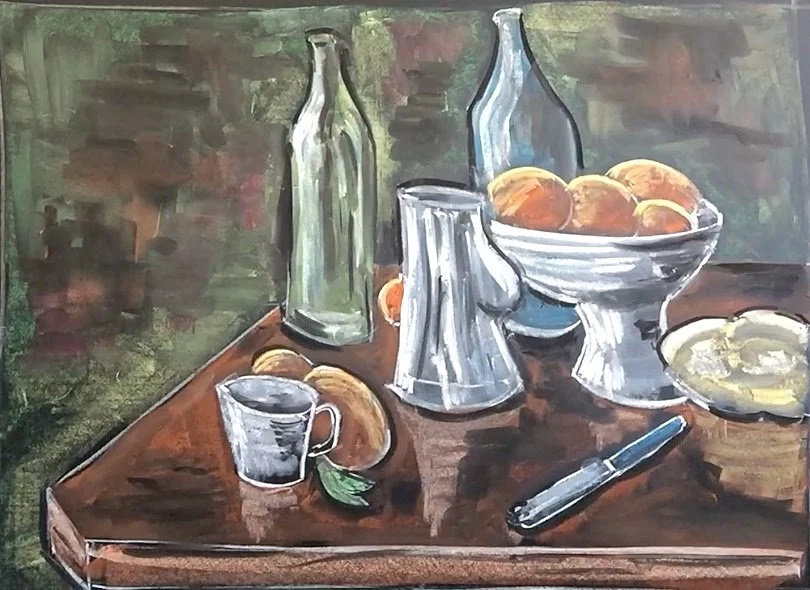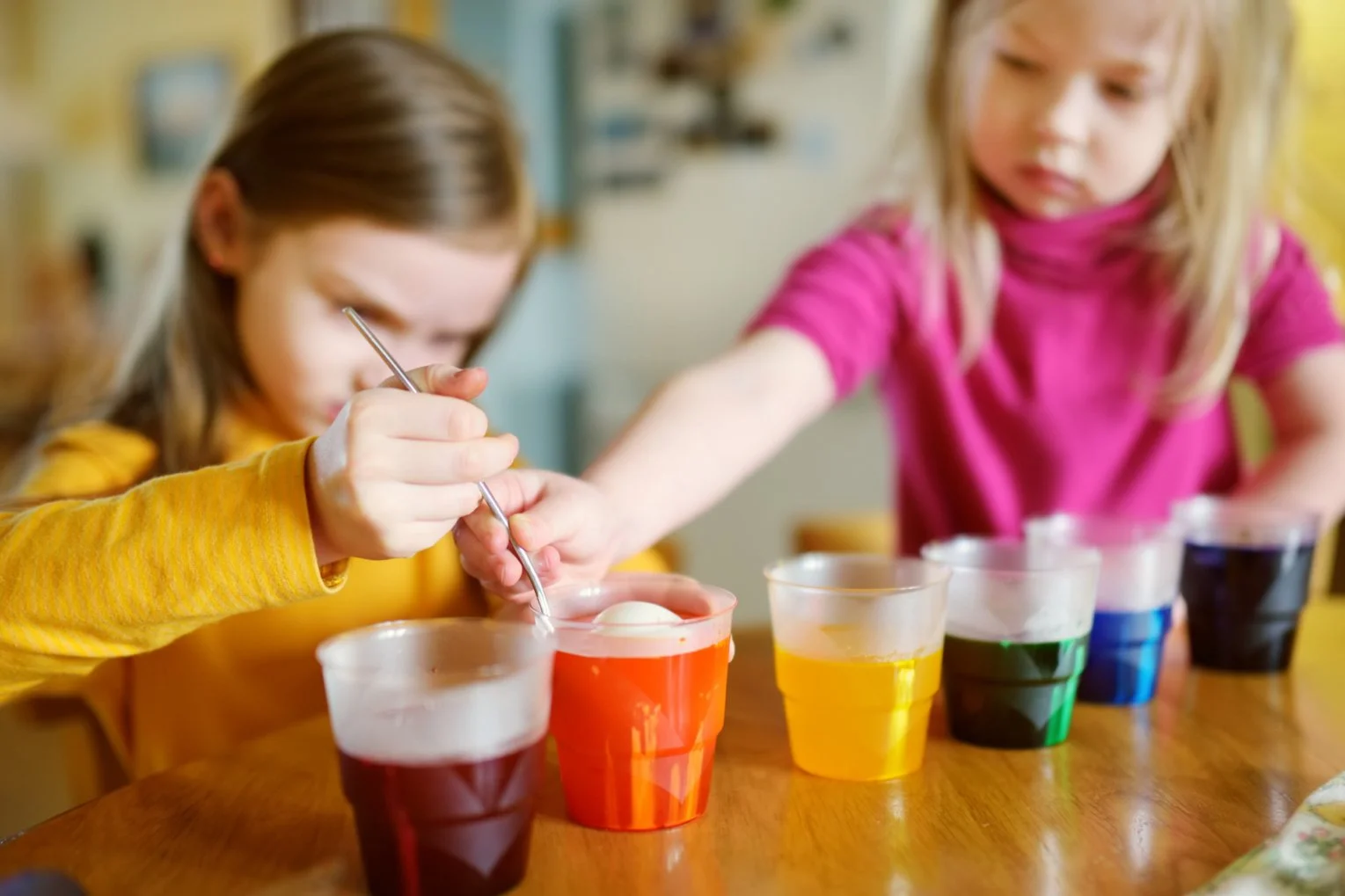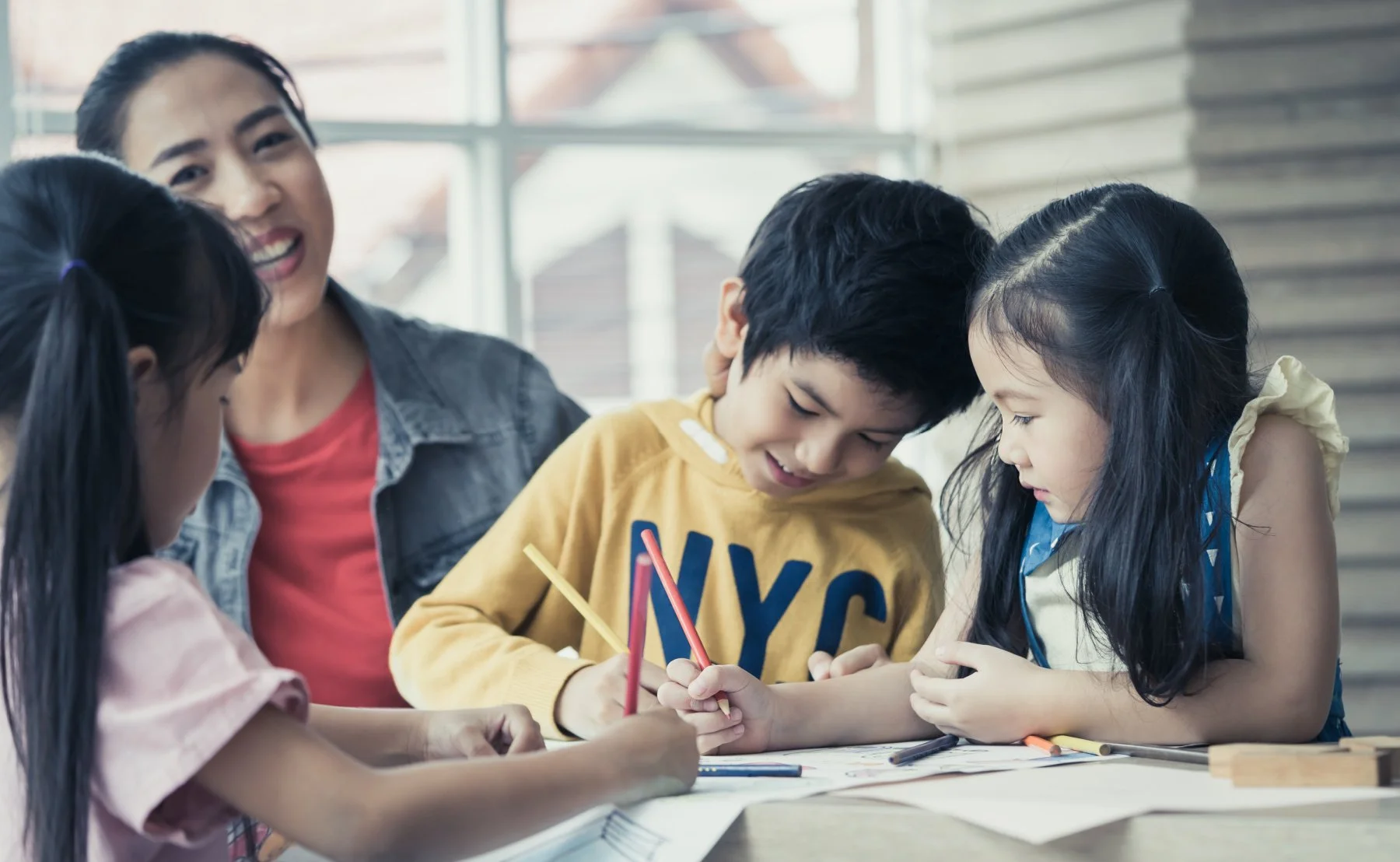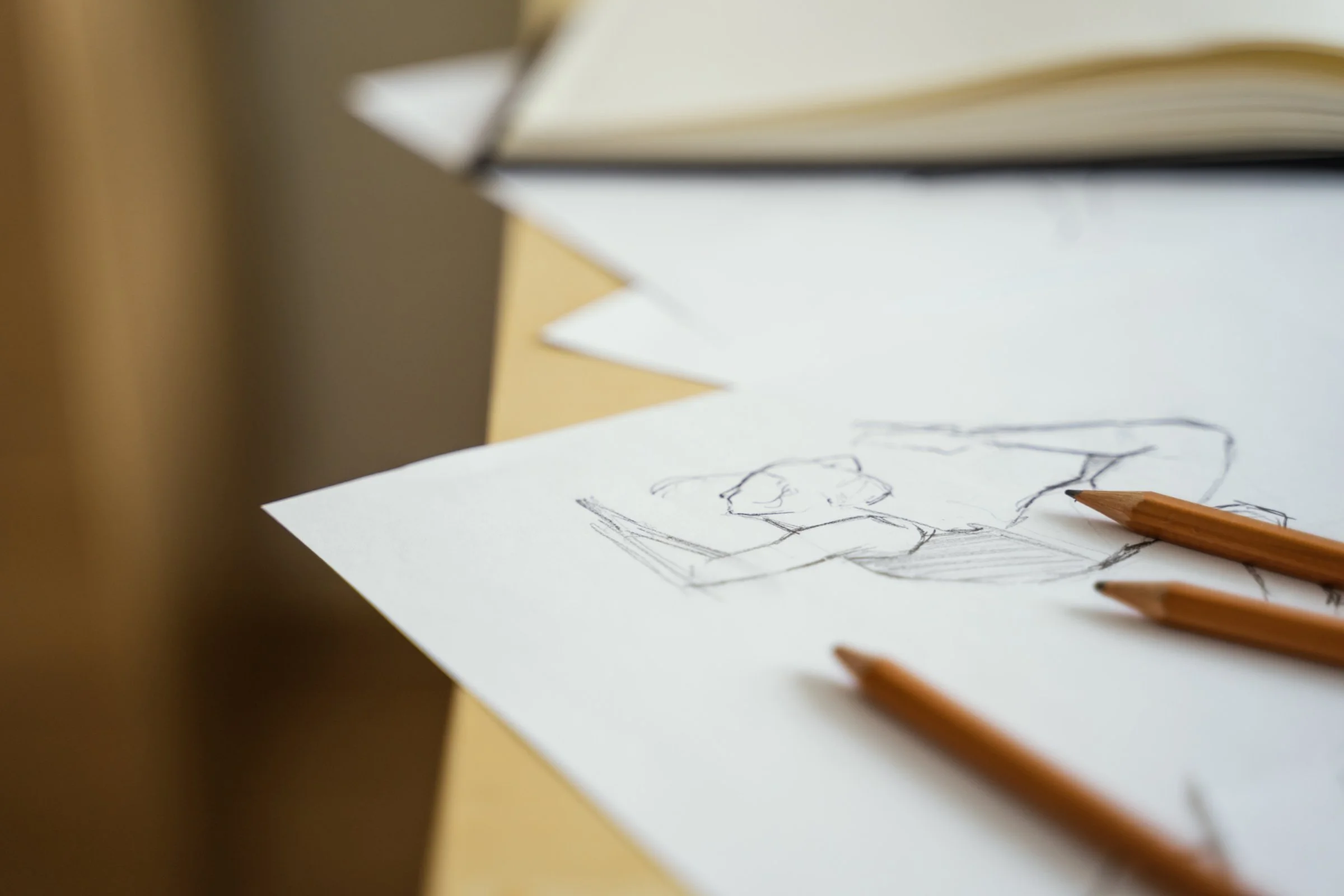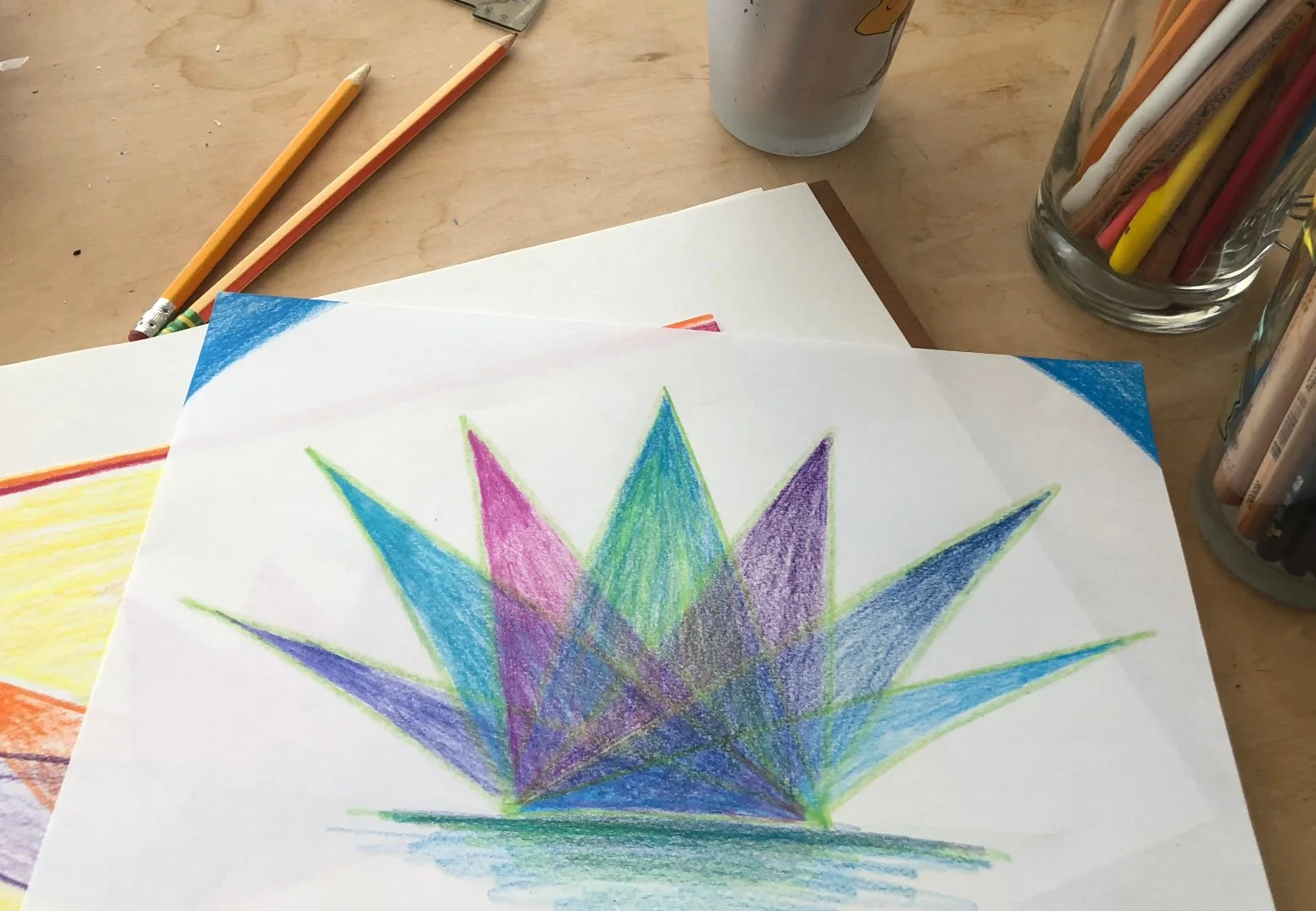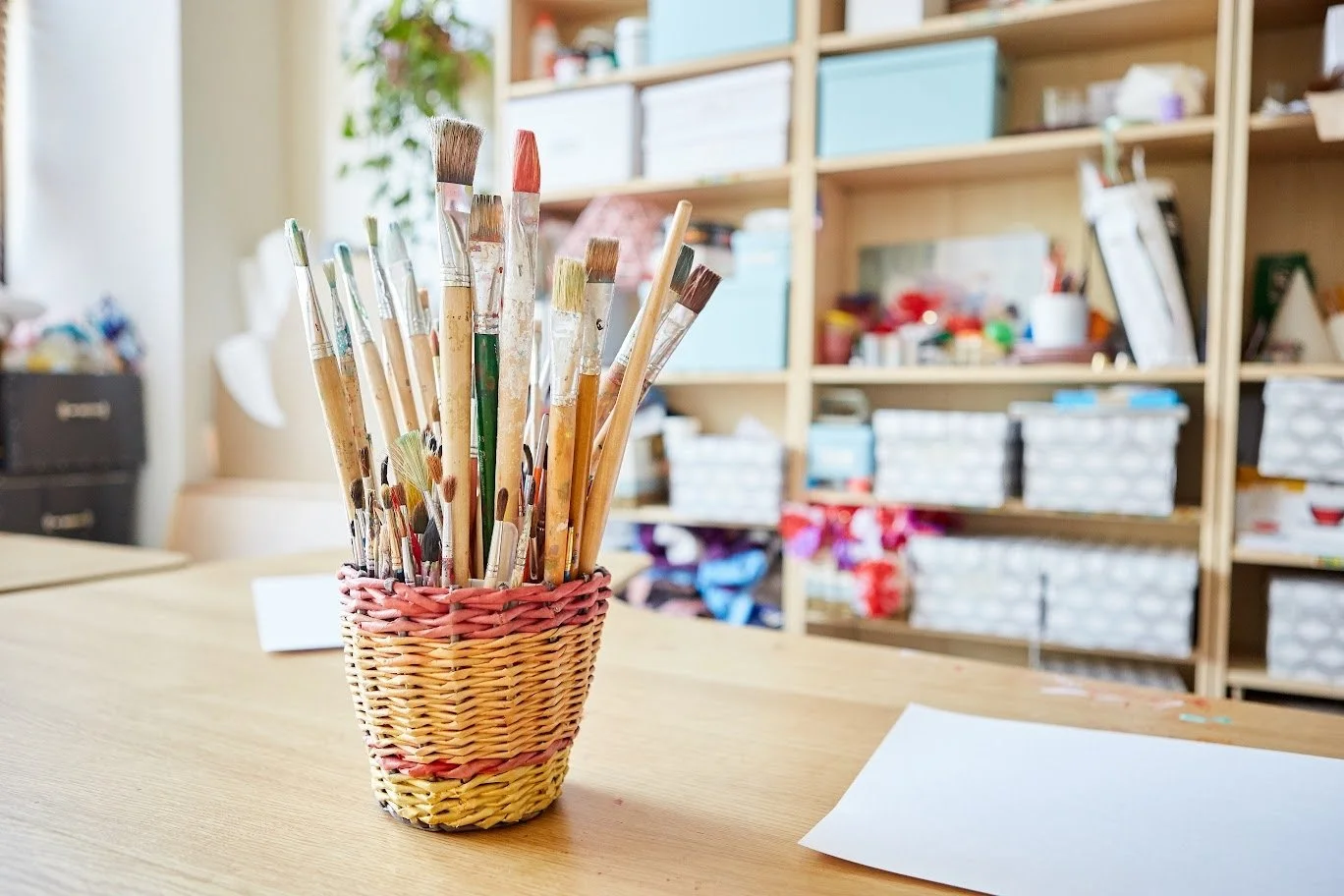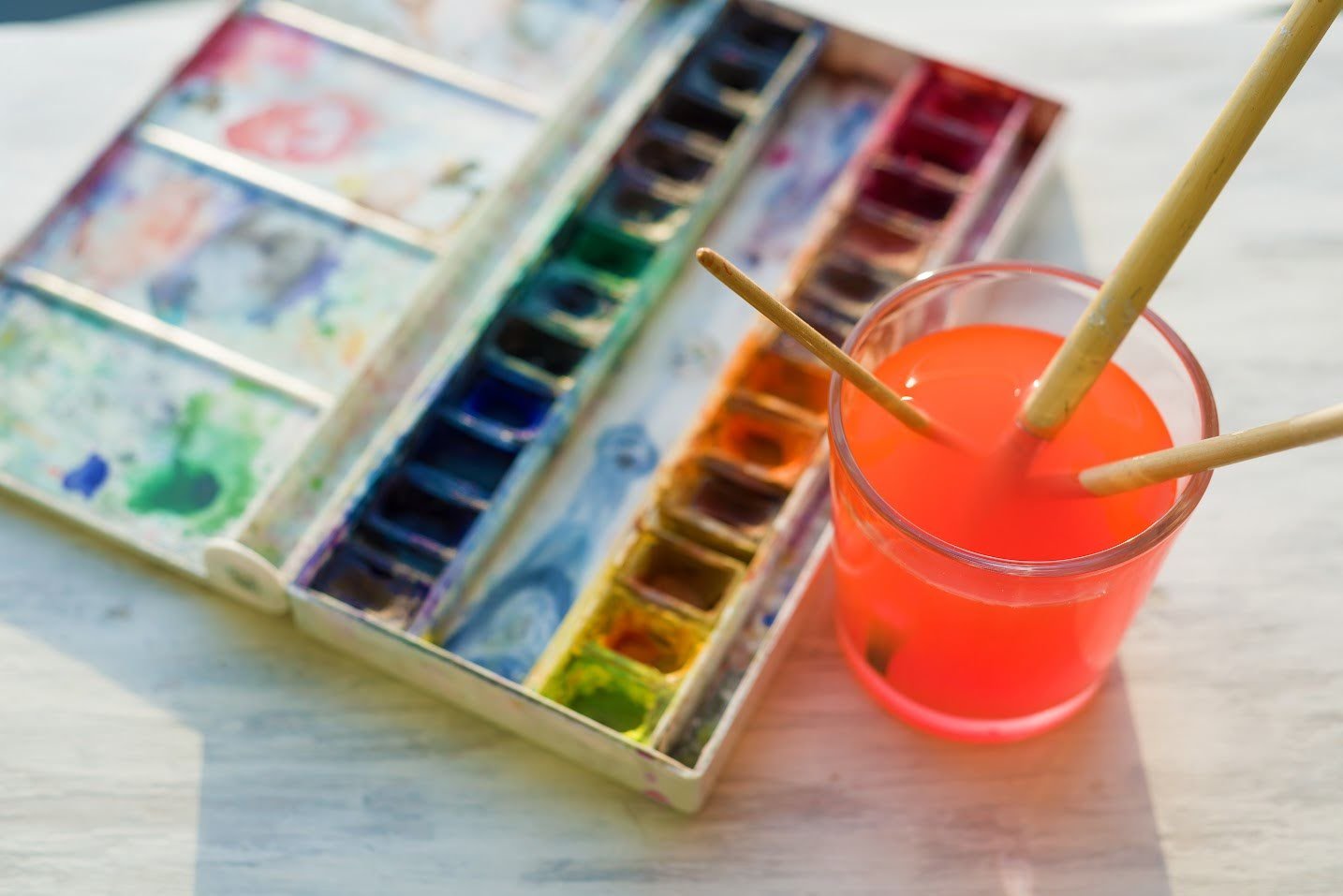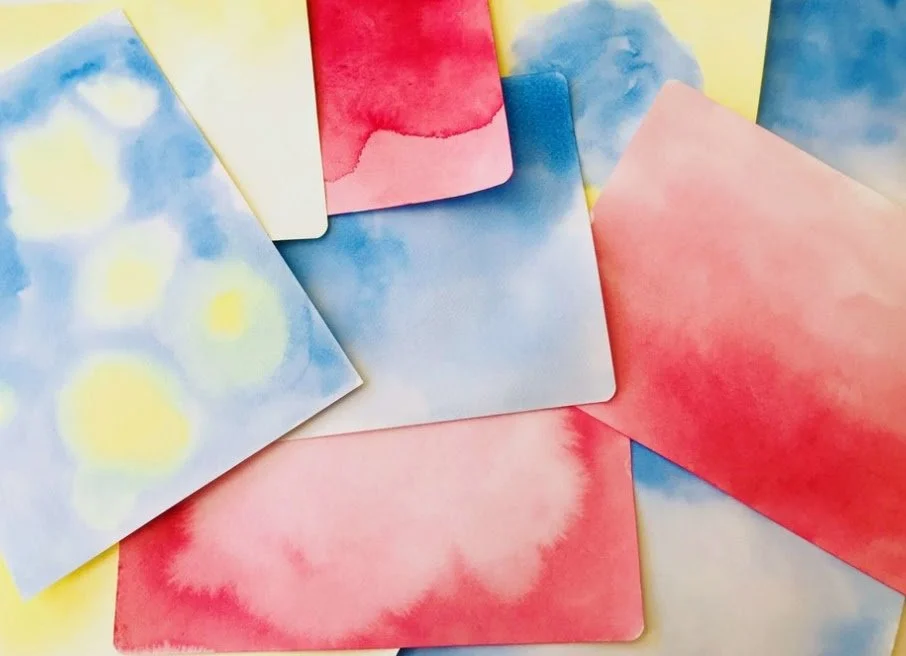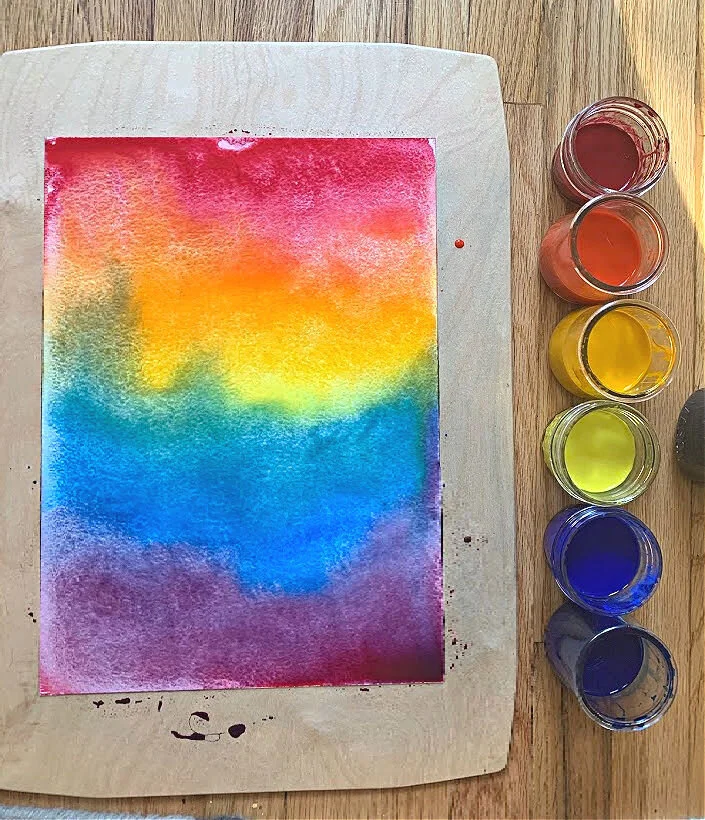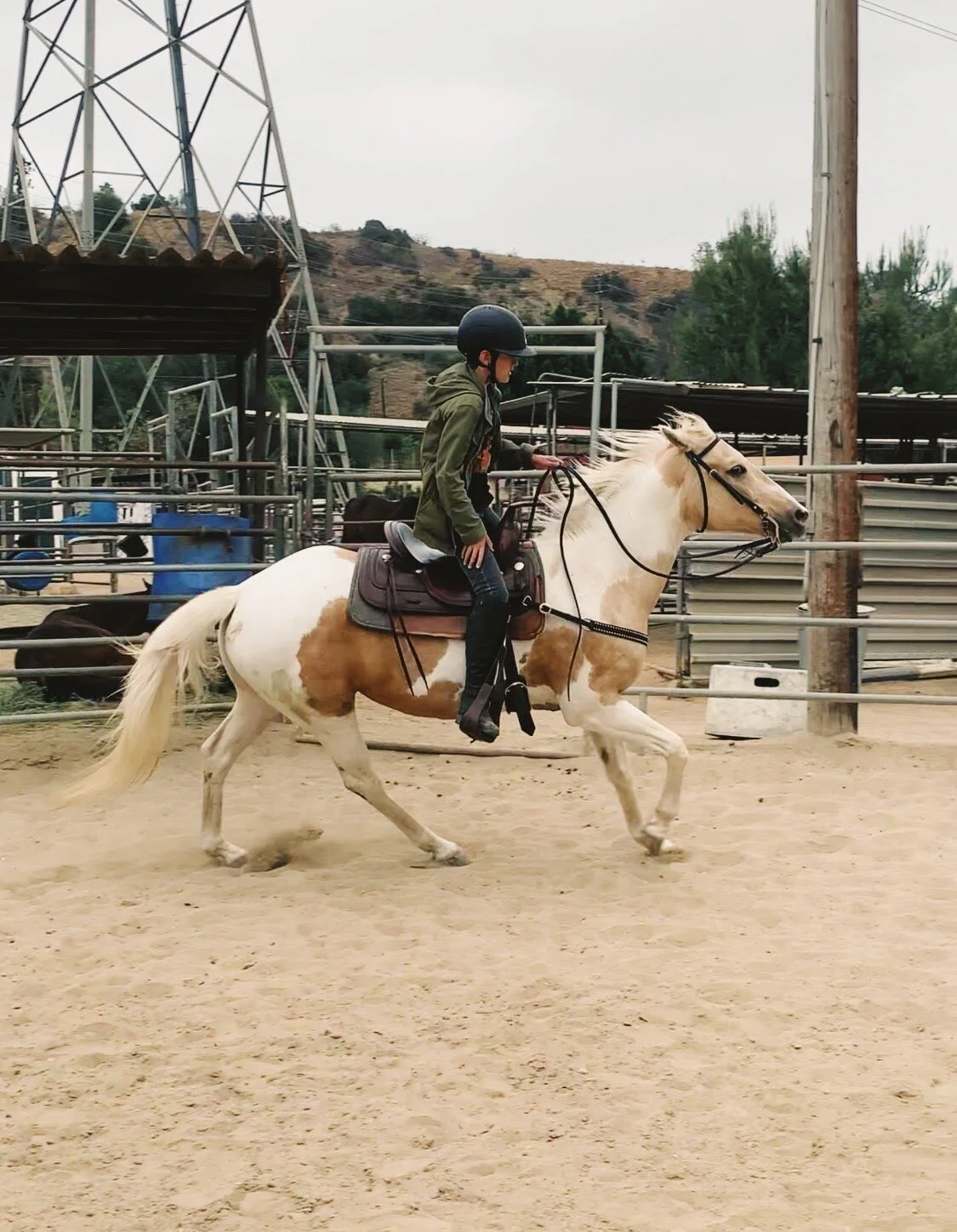
Waldorfish Blog
Learning through Recreating: What studying great artists has to teach us.
An important aspect of middle school art curriculum in Waldorf Education is providing opportunities for students to find their own artistic style.
A Matisse-inspired still life chalk drawing from our Weekly Art Foundations course.
One of the best ways to do this? Recreate the works of great artists from the past!
We realize this may sound counterintuitive; how can copying artwork from another artist help a middle schooler find their own style - isn’t it stifling their creativity?
In Waldorf education, the practice of studying and emulating master artists aligns beautifully with its holistic, experiential approach to learning. Learning through imitation lays a strong foundation for creative expression!
The imitation is not about rigid replication but about deeply experiencing artistic techniques, composition, and color in a hands-on way.
Just as a young musician learns by playing classical pieces before composing their own music, young artists build confidence and skill by studying the masters.
Just as so much of the Waldorf curriculum does in 7th grade, we take our cues from the artists of the Renaissance. When the artistic world was expanding quickly and household names such as Leonardo di Vinci, Michelangelo and Raphael were in their creative primes, one of the ways hopeful apprentices learned was to recreate the style, technique and subjects of these (and other) artists. This method aligns with the Waldorf developmental principle that learning is most effective when it is embodied and experienced.
Through the process of copying entire great works of art or specific techniques individually, students learn foundational skills required to create a beautiful and complete piece.
A chalk drawing inspired by Monet’s “Water Lilies” series, from our Weekly Art Foundations course.
From setting the base, finding the most pleasing composition, and mixing colors, studying the masters serves as a stepping stone to personal artistic expression.
As we have discovered again and again, a strong foundation provides the confidence and ability to branch out and find one’s own style; copying masterworks isn’t just about technique—it engages the hands, heart, and mind.
Waldorf education seeks to cultivate the whole child, and working with master artists' techniques allows students to feel the art, not just analyze it.
Recreating an artist’s work is the epitome of learning through doing, which is what Waldorf education is all about!
In our art courses, we include various lessons that do just this: take a well-known artist’s work and techniques, and recreate them. From Claude Monet to Alma Thomas, Vincent van Gogh, to figure drawing as Michaelangelo once did, our courses draw on inspiration from great artists of the past and awaken our students’ own creative forces in a deeply meaningful way.
About the Authors
Robyn Beaufoy is Waldorfish’s CEO, and also a course instructor for Simple Season, Waldorf Art for Beginners, and Weekly Art Foundations. You’ll find her intuitive touches and influences throughout everything Waldorfish offers. Robyn has been in the world of education for over 25 years, with an MA in Education and a certification in Waldorf teaching - she also homeschooled both of her children for some of that time. In 2012 Robyn co-founded Waldorfish.com, creating it with the vision of making Waldorf inspired-art and pedagogy more accessible, joyful, and doable for homeschoolers all over the world.
Caitlin Amajor is Waldorfish’s course instructor for Geometry grades 5 & 6, and Botany, as well as our Administrative Assistant. From a young age, Caitlin has been immersed in Waldorf education, attending a Waldorf school from K-8. After receiving a BA in History, Caitlin gained her certification in Waldorf teaching, and spent seven years as a Waldorf class teacher in the upper grades. With a special fondness for watercolor painting and geometry, Caitlin loves bringing Waldorf education to her students all over the world, and seeing their own individuality and style bloom from the curriculum!
More from Waldorfish!
Waldorf Grade Three Painting: Growing in Color
In Waldorf education, the third grade curriculum includes studying agriculture, shelters around the world, ancient creation stories, and more.
Third grade painting curriculum includes form, color, and beauty!
Through explorations of agriculture and house-building, the children are literally brought down to earth as they carry out practical farming and building activities. In painting lessons, we begin to see more forms and detail than ever before: wheat stalks, log cabins, or a knight overcoming a dragon. Why this shift towards detail and realism in the painting curriculum? Because as educators, it is our task to support the third grade child as they orient themselves in the world.
In the lower grades and in early childhood, children have a deep connection and relationship to the world and people around them. But as they grow into third grade, their independence and individualism begins to bud. Children begin to feel more separate from their friends and family (an appropriate shift at this stage!), they begin to notice some of the challenges and injustices in the world around them, and overall, the world is suddenly new and a bit unfamiliar.
Stories come to life through the watercolor curriculum.
As we can imagine (or maybe even remember) this is not an easy place for a child to be in their development.
It can feel uncomfortable, exciting, or uncertain. As educators, our task is to strive to communicate this overall theme: human beings have lived, thrived, and overcome. Humans have figured out how to make homes and live in community, wherever they may be, with whatever resources they may have. Even through the greatest of challenges and obstacles, humans find a way to persevere.
In Waldorf education, the painting curriculum is designed to meet the growing child right where they are.
The activity of painting mirrors what the children are also exploring in other parts of the curriculum: how human beings live in the world in all different places, circumstances, and challenges.
The third grade shelter curriculum melds perfectly into watercolor painting class.
Painting shelters is not simply painting a structure, but includes observing and appreciating the beauty of the surrounding natural landscape. A log cabin comes to life on the page through the shady forest; an adobe home emerges from the warm and arid desert landscape; snow houses appear through an icy blue snowstorm.
To deepen their studies of farming, the children paint wheat stalks ready for milling, apples ready for picking, and carrots pulled from the carefully tilled earth.
After immersing themselves in ancient creation stories, the children’s paintings of rainbows are not just a combination of colors, but the representation of humanity surviving a storm, and their celebration of all the beauty and potential the world has to offer.
Third grade is a new kind of school year for the child: the world is something new and unfamiliar, and through the painting curriculum, the educator can support their journey in bringing the beauty of the earth, its resources, and the resilience of the human spirit to life!
About the Author
Amanda Ziadeh Mercer is a dynamic Waldorf Teacher! She has had the pleasure of working with children in varying stages of development, ranging from infants in Parent-Child programs to the more mature students of the eighth grade. This wide range of experiences has gifted her a full picture of the developmental stages of childhood.
MORE FROM WALDORFISH CONTRIBUTORS AND TEACHERS:
Waldorf Art at Home: Getting Your Supplies in Order
Creating a positive environment for your at-home art class requires a little bit of thought, planning, and intention.
A starting point? Give yourself a solid foundation.
This might look like finding a comfortable and large enough workspace, finding the right time of day that works best for your children and schedule…etc.
Here’s another one: getting your supplies in order!
Taking a little time to prepare your art supplies will make a big, positive impact!
Making art classes successful requires some prep, and in a way, the set-up, materials, and clean-up matter more than the lesson itself. If all of these things are handled, then you (and the students!) can focus, and truly enjoy and learn from the lesson at hand.
Looking at supply lists (especially for Waldorf art) can make your head spin a bit; it can feel like a lot of stuff, and expensive stuff at that.
How can you be sure you’ll actually use what you buy? Are there other alternative brands that will give you the same result? How do you store everything to keep it in good shape for the next class?
These questions are why we created our Waldorf Art for Beginners course!
In it, we give you the full walk-through of supplies you’ll need for Waldorf art. The kind of supplies you’ll actually want to use, and which brands provide quality in terms of experience and result. We share what we’ve learned from our many, many years of experience both in the classroom as well as homeschooling plus lessons learned from a lot of trial and error!
At this point, you may be asking yourself, “Does the specific kind of art supply really matter? Aren’t they all basically the same?”
We’re here to tell you that they definitely are NOT, and often, spending a bit more at the beginning will save you frustration and needing to spend more down the road.
Art class should feel enjoyable, fun, and like your time was used wisely to create and grow. We highly recommend controlling the variables that you can, and having the best supplies at hand will give you the best odds of results your artists are happy with.
A prepared, organized workspace leaves room for a peaceful, creative art class.
For example, let’s talk about painting paper, an item that seems fairly inconsequential in the grand scheme of painting, but actually really matters a LOT.
For watercolor painting, the paper needs to be thick enough to withstand the water, the friction of the brush, and the layers of paint. With that in place, the child can paint to their heart’s content without noticing the paper. Instead they’re noticing the experience, the color, and forming those skills and connections we strive for as educators!
But, without the right kind of paper, the lesson and experience becomes secondary. Too-thin paper will pill, rip easily, and not hold the pigment in a strong way. It is very frustrating for the child, as they aren’t able to create freely.
All this is to say: get the best supplies you can.
Not necessarily the most expensive, not the most “Waldorf”, but the items that will make the lesson, creativity, and experience central to the art class. You won’t regret it, we promise!
Our Waldorf Art for Beginners course is open for enrollment year-round, and provides a full, comprehensive walk-through of all things Waldorf art supplies: crayons, watercolor paints (and paper!), colored pencil, and more. PLUS instructor support, links to our favorite vendors, and forever access if ever you need to reference the course again for helpful reminders.
About the Authors
Robyn Beaufoy is Waldorfish’s CEO, and a course instructor for Waldorf Art for Beginners, Weekly Art Foundations, and Simple Season. You’ll find her intuitive touches and influences throughout everything Waldorfish offers! Robyn has been in the world of education for over 25 years, with an MA in Education and a certification in Waldorf teaching - she also homeschooled both of her children. In 2012 Robyn co-founded Waldorfish.com, creating it with the vision of making Waldorf inspired-art and pedagogy more accessible, joyful, and doable to homeschoolers all over the world.
Caitlin Amajor is Waldorfish’s course instructor for Geometry grades 5 & 6, and Botany, as well as our Administrative Assistant. From a young age, Caitlin has been immersed in Waldorf education, attending a Waldorf school from K-8. After receiving a BA in History, Caitlin gained her certification in Waldorf teaching, and spent seven years as a Waldorf class teacher in the upper grades. With a special fondness for watercolor painting and geometry, Caitlin loves bringing Waldorf education to her students all over the world, and seeing their own individuality and style bloom from the curriculum!
Waldorf Grade Two Painting: Coming into Form
What forms can we find in the color?
In first grade, the experience of painting becomes a formal and rhythmical experience.
Colors are introduced very slowly and purposefully; each is given a personality and mood. The unfolding of color in this way allows the children to build a connection to each as individuals. In the Grade One painting course, the colors carmine red, lemon yellow, and ultramarine are introduced and worked with through the use of verse and song. (To learn more about first grade painting and the philosophy behind it, click here!)
“Forms by themselves are of course stationary; they are motionless and stay where they are. But the moment the form has color the inner movement of the color sets the form in motion and the world’s ripples, spiritual ripples, pass through it. If you color a form you immediately give it a soul quality of a universal kind, because the color belongs to more than just the form...”
How does watercolor painting evolve with the growing second grader?
At this age, it is important to keep in the mind the child as they are now.
They are very much living in the innocence of early childhood and beginning to move away from it as they grow. First graders view the world in their wholeness and purity, while the growing second grader has a new capacity to see human nature in duality- the higher nature of humans, and the less virtuous parts of us as well.
Beautiful mountains in simple colors!
As the second grader views the world through a new lens, story becomes the main tool the teacher (whether they are in the classroom or at home) uses to introduce and build connection with color. With the stories of Noble People, animals, and fables, the teacher is meeting the child where they are, showing them the different aspects of how human beings can live and influence the world in which we live. These stories are examples of how humans can choose to act in their higher nature, and not live in the more “animal” nature of mischievous or dark aspects of the human being.
“...The color the individual form is given links it up with its surroundings; in fact it links it altogether in the world. You could say that when you color a form you should feel that what you are doing to the form is ensouling it. You are breathing soul into dead form when you give it color.
-Rudolf Steiner”
At this age, children still have rich and active imaginations, and with story and verse, the essence of colors are introduced, allowing the children to forge a connection with the color on a deep level. Carmine red is strong and fiery, golden yellow is warm, and stronger than the lemon yellow, and prussian blue has a new and more individual quality than the ultramarine, especially when it meets another color on the page.
Beautiful tulips from our second grade painting course.
The meeting of these new secondary colors is a new and essential experience for the second grader.
The children view not only how colors are as they stand alone, but how they are as they meet. How do they relate to each other? To their peers? What combinations create something beautiful or murky? Here again holds the theme of duality that the second grader is beginning to experience within themselves and observing in the world around them.
With duality, the second grader begins to paint forms- landscapes, the ocean, sunrises and sunsets, streams, and more. Through painting, the world comes into form, for example, the shades of blue become the waves of the ocean, the yellows form into happy flowers, and the reds flames of fire. As the child forms, and views the world, so does their experience in painting class.
Are you interested in bringing watercolor painting to your (home)school curriculum? Check out our Grade One and Grade Two painting courses! Our amazing instructor Amanda Mercer has created online courses that provide everything you need to make weekly painting lessons a doable, fun, and meaningful experience.
About the Author
Amanda Ziadeh Mercer is a dynamic Waldorf Teacher! She has had the pleasure of working with children in varying stages of development, ranging from infants in Parent-Child programs to the more mature students of the eighth grade. This wide range of experiences has gifted her a full picture of the developmental stages of childhood.
More from Waldorfish:
Looking for something?
Welcome to Waldorfish! We started this adventure in 2012 out of a desire to make Waldorf training more accessible to class teachers in remote locations and to homeschooling families everywhere! Read more, click here.
WE WON! Our Weekly Art courses were voted “best interactive art program.” Learn more about the award, here.
A few of our most popular blog posts:

